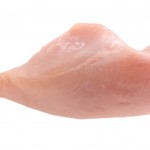These chicken sesame noodles are so simple for children to put together. They make a great snack or even a nice change for a lunch box. They will keep for around two days in an air-tight container in the fridge.
Try adding different vegetable combinations, and if your children are really adventurous try adding some chilli flakes for a little kick!
Skills Check
Follow a recipe; follow food safety & hygiene rules; tidy away; use measuring spoons; cut using bridge/claw technique safely; use a vegetable peeler safely, use a box grater safely; use the hob (with adult supervision).
Equipment
Large lidded saucepan, chopping board, two forks, medium saucepan, medium bowl, metal spoon, measuring spoons, vegetable peeler, box grater, knife, chopping board, serving bowls.
Allergens (Please note the allergens listed are indicative only. Allergens vary depending on brand; check the labels on the products you use)
Wheat | Gluten | Eggs | Sesame | Soya | May contain sulphites
Ingredients (serves 4):
- 1 large chicken breast (you could poach this prior to class and bring the cooked, shredded chicken to save time)
- 250g egg noodles
- 1 medium carrot, grated
- 1 red pepper, de-seeded and diced
- 5 tbsp balsamic vinegar
- 3 tbsp soy sauce
- 2 tbsp sesame oil
- 2 tbsp honey
- 2 tbsp sesame seeds
Method
- Poach the chicken breast in water/chicken stock. Place the chicken in a saucepan and cover with the water/stock by around an inch. Bring the water to a boil, reduce to a simmer and cover with a lid. Simmer for around 12-14 minutes. The chicken is cooked when it is opaque through the middle.
- Remove the chicken from the poaching liquid and shred on a chopping board with two forks. Put aside shredded chicken to cool.
- Boil the noodles according to packet instructions until al dente.
- In a medium bowl, mix together the vinegar, soy, sesame oil and honey.
- Drain the noodles and mix while warm with the sauce. Leave it to cool slightly.
- Grate the carrot and dice the red pepper. Add the vegetables to the cooled noodles along with the chicken and sesame seeds. Mix well.
So thinking about Chicken Sesame Noodles ...

Egg noodles are low in fat and provide us with carbohydrate and some protein from the eggs. Beware instant packet-type noodles which are very high in salt.
Vegetables are so good for us! Low in fat, sugar and calories and high in vitamins, minerals and antioxidants.
Nutritional Information
| - | Energy | 1246kJ / 297kcal | 15% |
| Med | Fat | 11.5g | 16% |
| Low | Saturates | 2.1g | 11% |
| Low | Sugar | 12.7g | 14% |
| Med | Salt | 1.1g | 19% |
per 280g serving
% of an adult's reference intake
Typical values per 100g: Energy 445kJ / 106kcal
Notes
A traffic light system is used on nutrition labels to make it easier to see which foods and drinks are lower in calories, fat, sugar and salt. Try and choose more ‘greens’ and ‘ambers’ and fewer ‘reds’, and stick to smaller portions of ‘reds’.
Just because a recipe or a food has a red traffic light doesn't mean you shouldn't eat it. Understanding why a food or recipe might have a red light can be helpful. For example oily fish is high in total fat and so any recipe containing oily fish is likely to be ‘red’ for fat. But it is recommended that we eat oily fish at least once a week because the type of fat it contains is beneficial for our health.
% Reference Intakes are also shown. Reference Intakes are guidelines about the approximate amount of particular nutrients and energy required for a healthy diet (based on an average-sized woman doing an average amount of physical activity). Most children will require less than these Reference Intakes. The contribution of one serving of a food or drink to the Reference Intake for each nutrient is expressed as a percentage.




